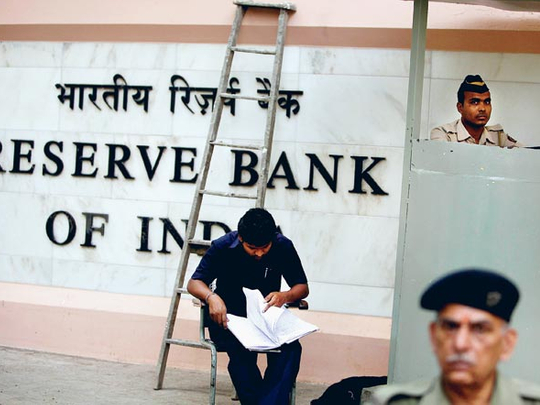
Mumbai (Bloomberg): India’s deepening economic slowdown is likely to throw open the door to more monetary policy easing this week. The Reserve Bank of India will meet days after a report showed growth collapsed to 4.5 per cent in the July-September quarter, the first time it’s been below 5 per cent since 2013.
Led by Governor Shaktikanta Das, the RBI already has cut interest rates by 135 basis points in five moves this year, the most by any Asian central bank. Policymakers have had their focus squarely on reviving Asia’s third-largest economy, and last week’s weak data gives them added reason to continue pushing for growth. The rate is at 5.15 per cent now.
Dipping forecasts
“The weak numbers emphatically underscore the need of policy focus on growth,” said Shubhada Rao, chief economist at Yes Bank Ltd.. “We are expecting the RBI to execute another rate cut of 25 basis points at its next meeting.”
Last quarter’s growth slump showed a contraction in manufacturing and subdued investments. It was only government spending that bolstered the economy, with private consumption still fairly low key.
A slew of high-frequency indicators suggest the slowdown extended into October. The central bank may be pushed to lower its growth forecast for the fiscal year through March 2020 from 6.1 per cent, with economists already predicting expansion of just 5.6 per cent.
“We expect the central bank to take note of the downward surprises in the data versus forecasts and acknowledge a deeper-than-expected slowdown in economic activity,” said Rahul Bajoria, a senior economist at Barclays Bank Plc.. He expects the central bank to cut the repurchase rate by 40 basis points over the remainder of the fiscal year.
More boosters needed
Despite the monetary stimulus and a slew of government measures to boost the economy - including a $20 billion tax bonanza to companies - a recovery looks uncertain. Businesses have cut back on investments, preferring to repay loans instead, while consumers have curbed spending, fearing more job losses. The rural economy remains weak and borrowing is hamstrung by debt-laden banks and a crisis-ridden shadow lending sector.
Banks also haven’t passed on all of the 135 basis points of RBI’s rate cuts to borrowers, leaving policymakers frustrated. Monetary policy space is slowly closing as inflation starts to accelerate. Consumer prices rose 4.62 per cent in October from a year earlier, the first reading above 4 per cent - the RBI’s medium-term target - since July 2018, and the highest since June last year.
The spike was driven by a surge in onion prices, although core inflation - which strips out volatile food and fuel prices - had slowed to 3.4 per cent. “For the RBI, it presents a tough policy dilemma of overshooting inflation, undershooting growth and a fragile fiscal state,” said Madhavi Arora, an economist at Edelweiss Securities.
“Nonetheless, the weak quarterly GDP print will validate our call for further easing by the RBI by at least another 50 basis points in this cycle, despite an uptick in inflation beyond the 4 per cent comfort zone.”












